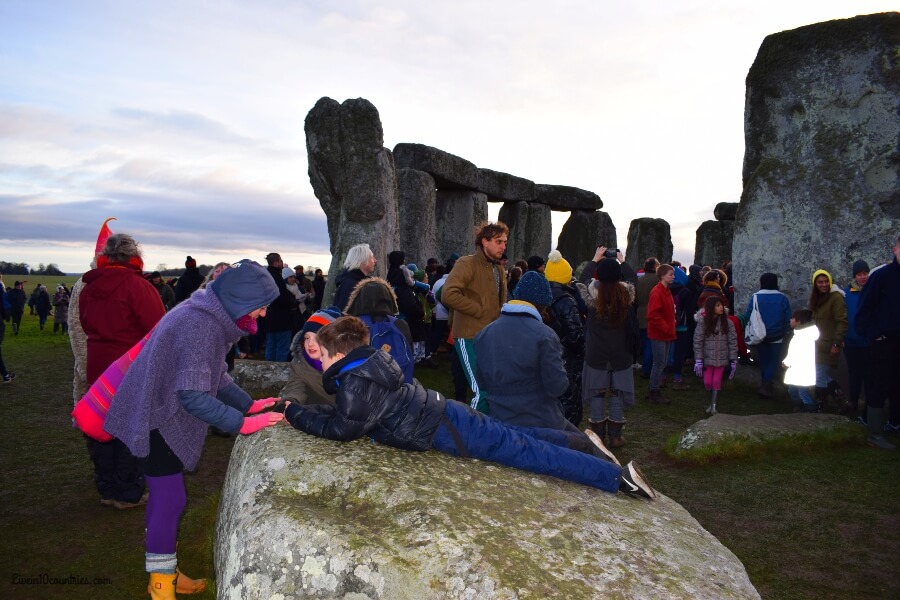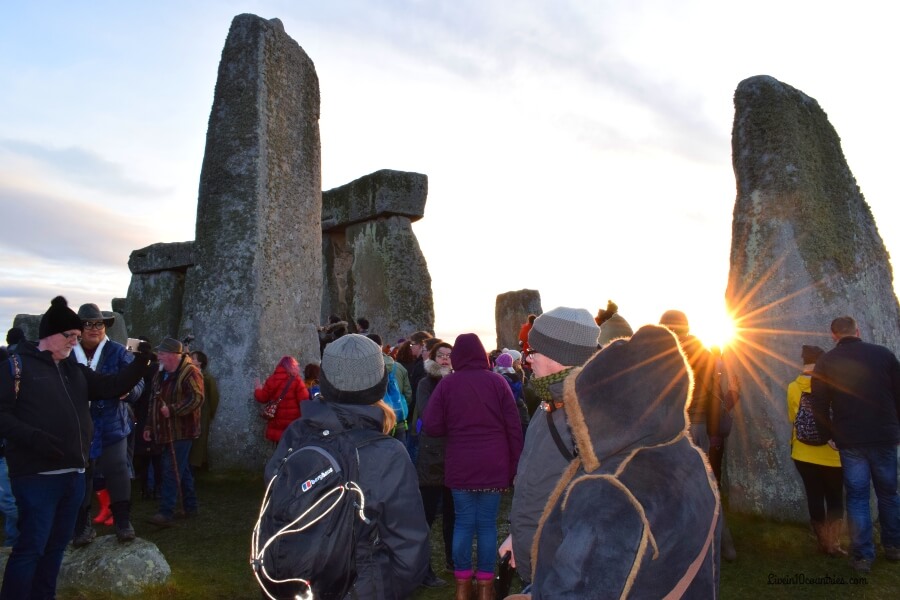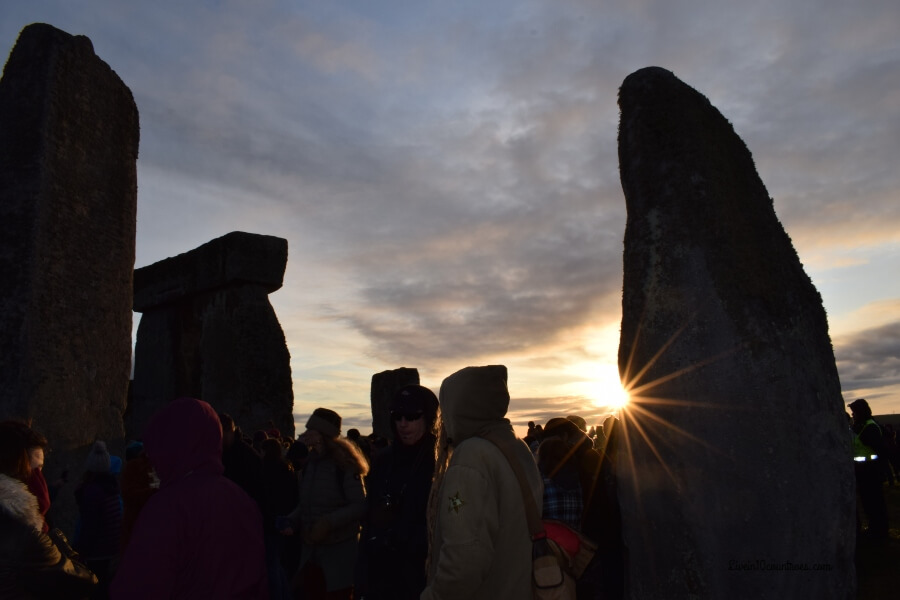Have you always fancied yourself as less lemming, more trailblazer? Do you love history, respect ancient traditions and swear to treat this incredible site with respect? Well there are two times of year when you should be visiting the iconic Stonehenge monument, and that’s during the summer solstice at Stonehenge (the shortest day of the year – June 21st) and the winter solstice (December 22nd).
The winter solstice at Stonehenge
Why so special? Well, because these are the only times in the year when you can actually go up to the stones and mingle between them.
Plus it’s a pretty damn amazing spiritual celebration and all round good time. Traipsing around a fence in the rain before whipping off to the gift centre on the other 363 days of the year? It doesn’t really compare.
It’s worth saying that this is a religious festival to many pagan believers, so show some respect, yo.
Why should I choose the winter solstice over the summer solstice event?
The winter celebration is a lot less popular – purely because people like to snuggle by a roaring fire rather than turn up on a misty morning in the middle of a field.
I would honestly say that this belongs on your bucketlist, though. It has far fewer crowds than its summer counterpart and snow on the stones is absolutely stunning.
The feeling of standing in the same spot where ancient peoples did and watching the start of more light, a new year and new beginning is powerful, event for unsentimental types like me. I find myself making big life decisions and setting goals which really stick with me.
Do you have to pay to visit Stonehenge?
The two solstice events are the only time when it costs zippo, nada, to enter this amazing spot.
There is a small fee for the car park (5 pounds), but we’re all encouraged to car share and keep costs down anyway.
What time should I arrive for the solstice?
For the summer event we got there bang on time and the car park was already about a third full.
This winter, I lost out on a car parking spot by about three cars – as English Heritage close the car park area once it’s full. That was at 6.50 am (50 minutes after the car park opened, more than an hour before the sunrise happened).
It was also after queueing to enter for around 20 minutes.
So, it’s well worth getting their early (and the eye wateringly early wake up time that involves) to claim your spot. In particular, if there’s been rain the night before, most of the field will be off limits for parking. Who’d want to be stuck in the mud? So grab your keys NOW.
This year the car park opens at 6am.
Where else can I park?
The nearest alternative car park is Lark Hill Camp, and that is about 5 miles from the stones, so it may be too far to make it for the solstice. And no, there’s no Uber at a time like this.
If you do miss out on a spot, drop off most of your party near the stones and then park at Lark Hill and try to get back to the site by public bus or with a lift from another solstice goer.
What time is the main event happening?
Sunrise is shortly after 8am.
What exactly happens?
The summer solstice has a far more Glasto kind of vibe, but the advantage of the winter event is that it has more families and a smaller crowd, so you can get more involved.
At both events, a group of pagans take to the centre of the inner ring. In summer it wasn’t possible to get close enough to hear them, but in winter we were right behind their circle and heard their haunting songs and felt a part of the ritual. They wore red and encouraged everyone to get involved!
Start off by getting a good look around the site and saying hi to the friendly visitors, everyone is really open at the event.
It’s well worth asking which stone the sun will peek through, if you’re not sure – that’s the classic solstice shot.
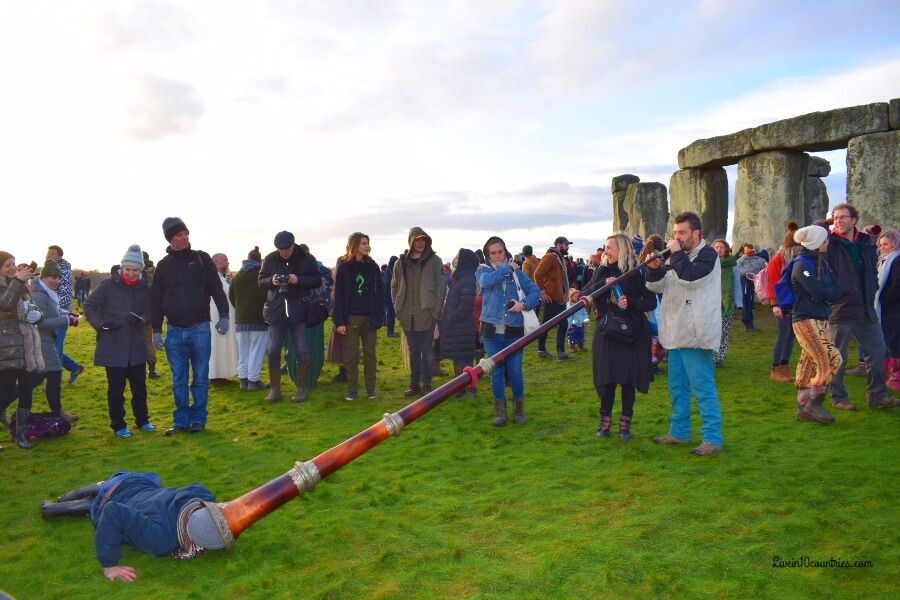
Where’s the best place to stand?
An enormous horn marks the beginning of the event, so get in position. It might take quite a few minutes for the sun to make it above the clouds (it’s Britain) but we found the centre right, looking towards the sunrise through a stone with a narrow opening to be best.
Don’t stand on the stones. If you need extra height, a selfie stick is the answer.
OK, I’m sold, how can I get to the winter solstice event?
The trouble with a sunrise spectacle is that it’s mighty hard to reach by bus and train.
Option 1: Drive. duh.
Option 2: You can join Liftshare and look for a carsharing buddy – passengers chip in for the petrol on the trip. Last year there was a Whatsapp group for people to co-ordinate lifts.
Option 3: No trains leave London in time to make the sunrise on the solstice day, but you can go the night before to Salisbury and it’ll take about an hour or hour and a half and cost 40 quid. From Salisbury, buses will take you to Amesbury and within a moderate waking distance of the stones.
Camping isn’t allowed at the solstice event and as this is a fairly short morning event, you’re best off sleeping in your warm bed before or booking a local room for the night.
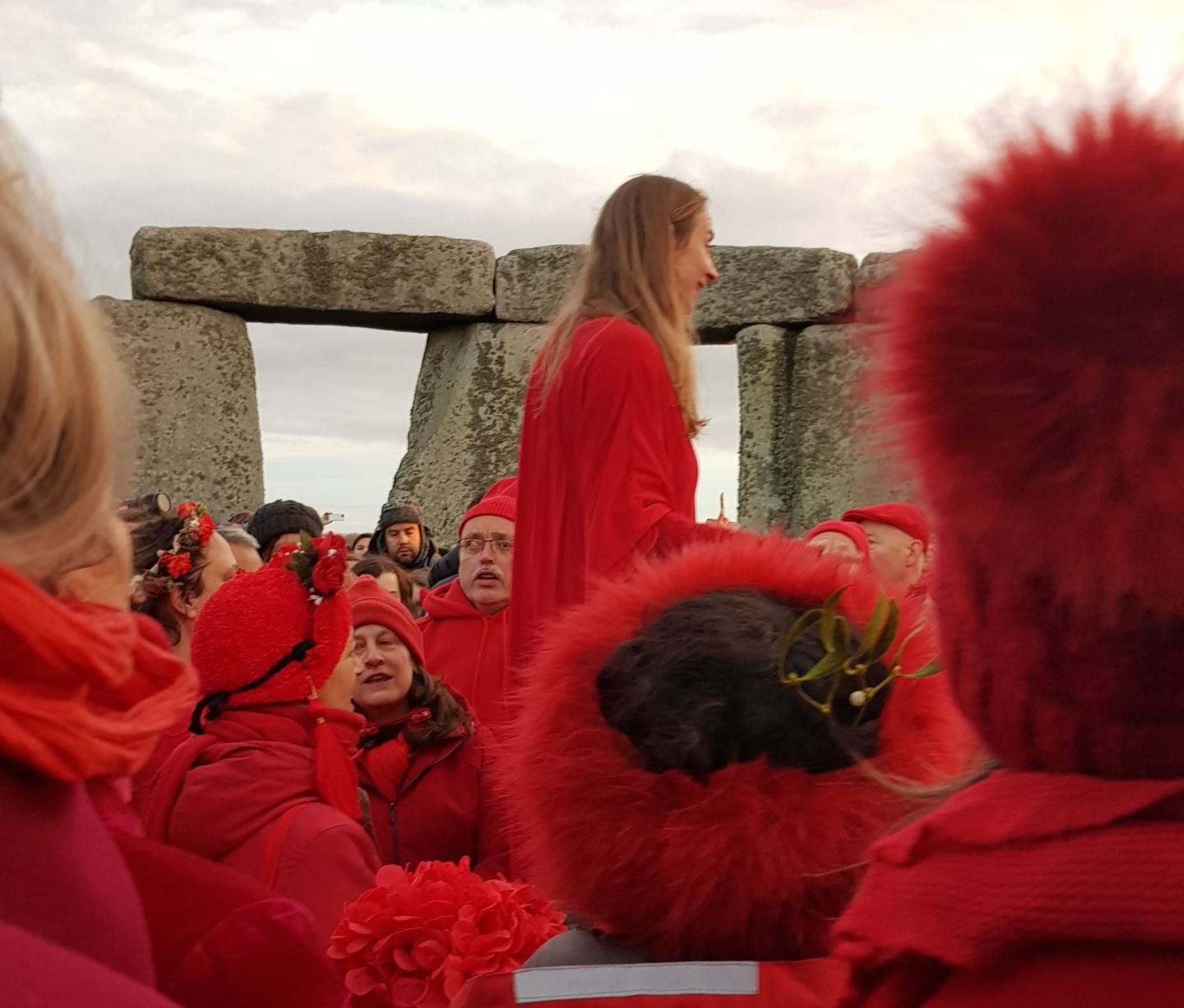
What facilities does English Heritage provide?
Loos, (portable cabins in the field and an amenity block in the coach park area) thankfully!
On arriving, I couldn’t see any signs that the visitor centre or its cafe was open, but then this isn’t really a touristy event.
A free shuttle bus (God send) is available for the winter event, taking around 15 minutes, as opposed to the walk from the car park to stones, which can take up to 40 minutes
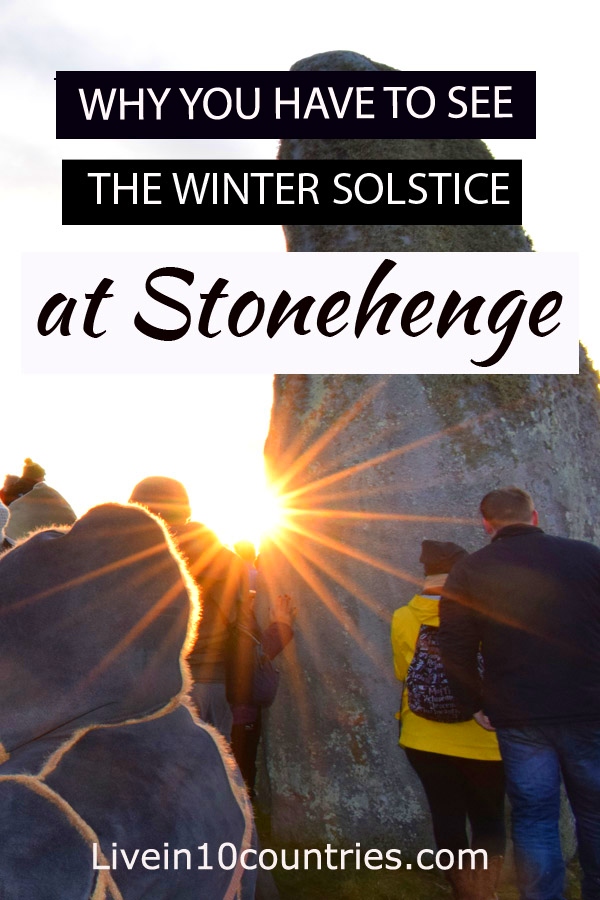
What should I bring?
It’s worth packing:
- a water bottle
- warm clothes
- wellies
- a torch (it’ll be very dark when you arrive)
- your camera
- waterproofs
- a selfie stick if you need good shots (the only way to take photos over the crowd)
- gloves
Looking for somewhere else to explore? Keep going west and you’ll find holidays in Devon and Cornwall.
- The best destination for your Working Holiday Visa - July 14, 2024
- The Enchanted Glade Glamping Review - April 23, 2024
- How to get a working holiday visa for the UK – a full guide - March 21, 2024


